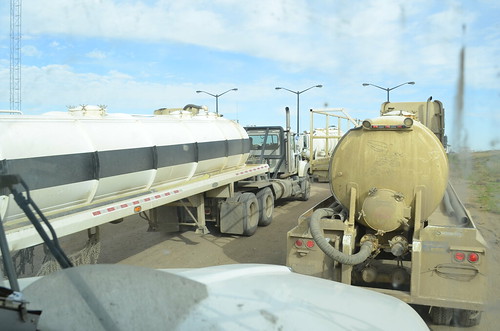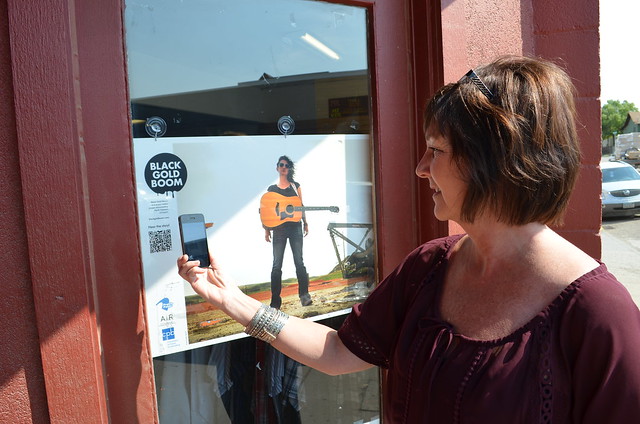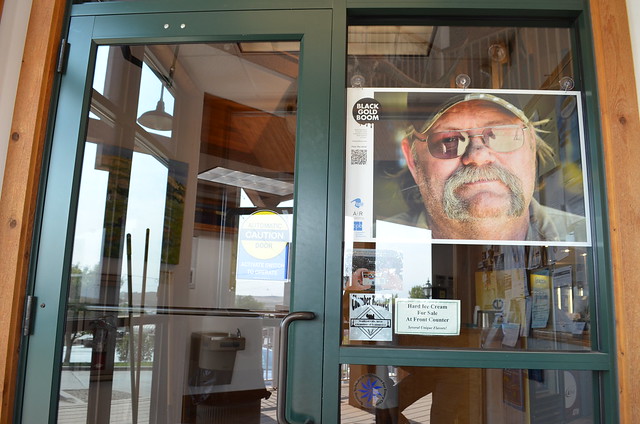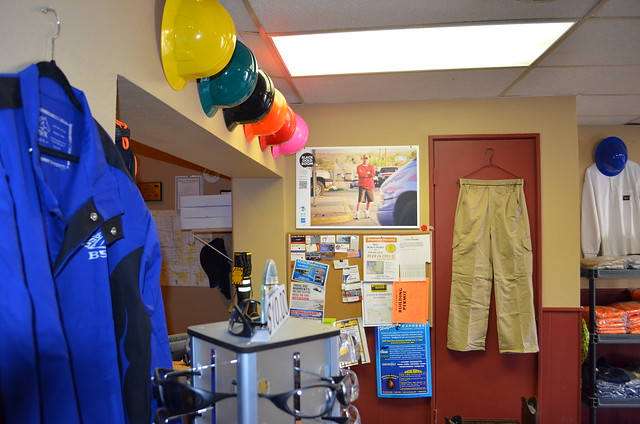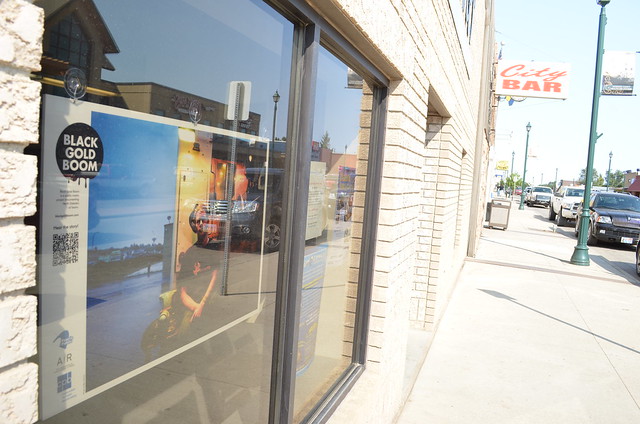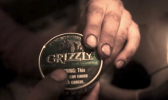This report aired Sept. 9, 2013 on Prairie Public. It’s part one of a four-part series on injuries and deaths in North Dakota’s oil patch. Story and photo by Todd Melby.
Made possible by a grant from the Fund for Investigative Journalism.
I’m in downtown Killdeer trying to cross the street with Ann Hafner. She’s the ambulance director.
“Right over here,” she says. “I don’t want us in the back of that new rig as much as I like it.”
Big semis are everywhere.
“This one is going to stop,” she says. ” Thank you.”
(Sound of truck honking.)
“Thanks,” Todd Melby says.
Killdeer, a little town out west, used to be a quiet place. But that was before the oil boom. “Yeah, if you were looking for a changing ambulance service, you found it,” says Hafner.
Hafner is a 51-year-old paramedic. She’s trim, short and full of energy. Before becoming a paramedic, she was a mom and a volunteer EMT. After her daughter graduated from high school, Hafner hit the books, earned a paramedic’s license and in just two years, she’s in charge of things here.
“This is going to be our new combination office and garage,” Hafner says. “We got a four-stall garage going in. We only have three ambulances. We are concerned about the future in five years. Five years ago we wouldn’t have thought we needed two.”
In 2010, the Census Bureau counted 751 people living here. Back then, Killdeer was best known as a rodeo town. The place to buy beer here is Lariat Liquors. Its high school sports teams are known as the Cowboys.
Nearby drilling has likely tripled the town’s population.
Before the boom, the Killdeer Area Ambulance Service averaged one or two calls a week. Now it’s one or two calls every day. Before the boom, everyone who responded to ambulance calls was a volunteer. Now the nonprofit service couldn’t survive without paid staffers like Hafner.
The calls they’re getting have changed too. Before the boom, the ambulance service mostly helped out car and farm accident victims and those with medical emergencies. Now? There’s lots of oil field accidents. “People fall off of things,” says Hafner. “People get crushed by things. People get hit by things. Things blow up.”
Those accidents result in all kinds of injuries, including concussions, broken bones, piercings and something called “degloving.” Says Hafner, “A degloving is where the skin is grabbed by something and removed from the body. So what you have is a head or a face or an arm or a leg with the skin peeled off.”
Hafner and her colleagues aren’t just dealing with gruesome injuries. Some of the most dangerous situations they face in the oil fields involve H2S also known as hydrogen sulfide gas, a colorless, odorless substance that can be deadly. “If we’re called to a scene and somebody is unconscious for an unknown reason, nobody knows why, we have to assume that’s what they’re unconscious from,” she says. “And if we get out without the proper protection, we’ll be unconscious from it too.”
Oil field accidents aren’t the only reason for the surge in emergency calls. More trucks are on the road, resulting in more accidents. “A lot of these guys work longer hours straight with less sleep than they ever have before,” Hafner says. “And they have to drive some of them quite a distance to where they’re sleeping. So you add a two-hour drive a day on top of working 12 hours in the heat like you’re not used to doing. If you ever had any inclination to high blood pressure, you’re going to have it now. So we have a lot of heart-related medical calls.”
Killdeer isn’t the only boom town where this is happening. More and more people with traumatic injuries are being admitted to hospitals in western North Dakota. Tom Nehring works at the state health department. He’s in charge of emergency services. “We’re seeing exponential growth in trauma patients, exponential growth in EMS calls, exponential growth in the number of patients that come into the hospital,” he says.”
Nehring’s use of the word “exponential” isn’t hyperbole. Since 2008, hospital trauma admissions have more than doubled in Dickinson, tripled in Williston and Watford City and quadrupled in Tioga. “Can the system handle the demand?” he asks. “At times, I believe that’s questionable.” The state is rich in oil revenues. North Dakota currently has $4.7 billion in the bank. That’s billion with a B. About one-fifth of that money is being sent back to the west to expand roads and build stuff. In fact, Killdeer’s new ambulance was purchased with an oil impact grant.
I asked Nehring if there was more the state could do to help nonprofit ambulance services like the one in Killdeer. “One of the things they could use is some staffing money to actually hire some full-time people,” he says. And just as soon as he said it, Nehring backed off.
If we were going to replace all the volunteers in the state of North Dakota with paid people that would cost us $31 million a year,” Nehring says.
$31 million a year. That’s less than one percent of $4.7 billion. Again, Tom Nehring. “I don’t think it’s just the state’s responsibility to run an EMS system. You don’t find that model anyplace else,” he says.
Back in Killdeer, I asked Ann Hafner, the ambulance services director, how things are holding up. “Do you have the resources to do what you need to do?” I asked.
“No. Spirit wise and drive and desire, yes we do,” Hafner says. “We have all the drive and enthusiasm of any group of people I’ve ever seen. We don’t have enough people. We don’t have enough equipment. We don’t have enough money.” But Hafner and local officials keep trying. Local taxes are enough to pay for two full-time paramedics and one full-time EMT. A few other medical personnel get paid to come in every now and then. The rest of the time, Killdeer relies on volunteers.
“Our volunteer base has gotten really low,” Hafner says. “But since April we’ve picked up 15 new volunteers so we’re building it back, gradually.” Near the end of my ambulance service visit, I sit down in the offices to talk to Chris Jeske. She’s a board member here.
“These guys have had anywhere from one run a day up to five or six runs a day,” Jeske says.
(Sound of pager beeping.)
“There’s the pager,” Jeske says.
Pager Announcement: “Killdeer Ambulance. Killdeer Ambulance. Please respond to a semi rollover, possibly an oil tanker.”
Hafner springs into action.
“Yeah, can you meet Aaron at the bay and bring six-seven,” Hafner says. “He’s on his way back from Manning. OK, thank you. Beth and Aaron are going to meet up here. Todd, I’ll talk to you later. Welcome to my life!”
More stories from the series are here:



